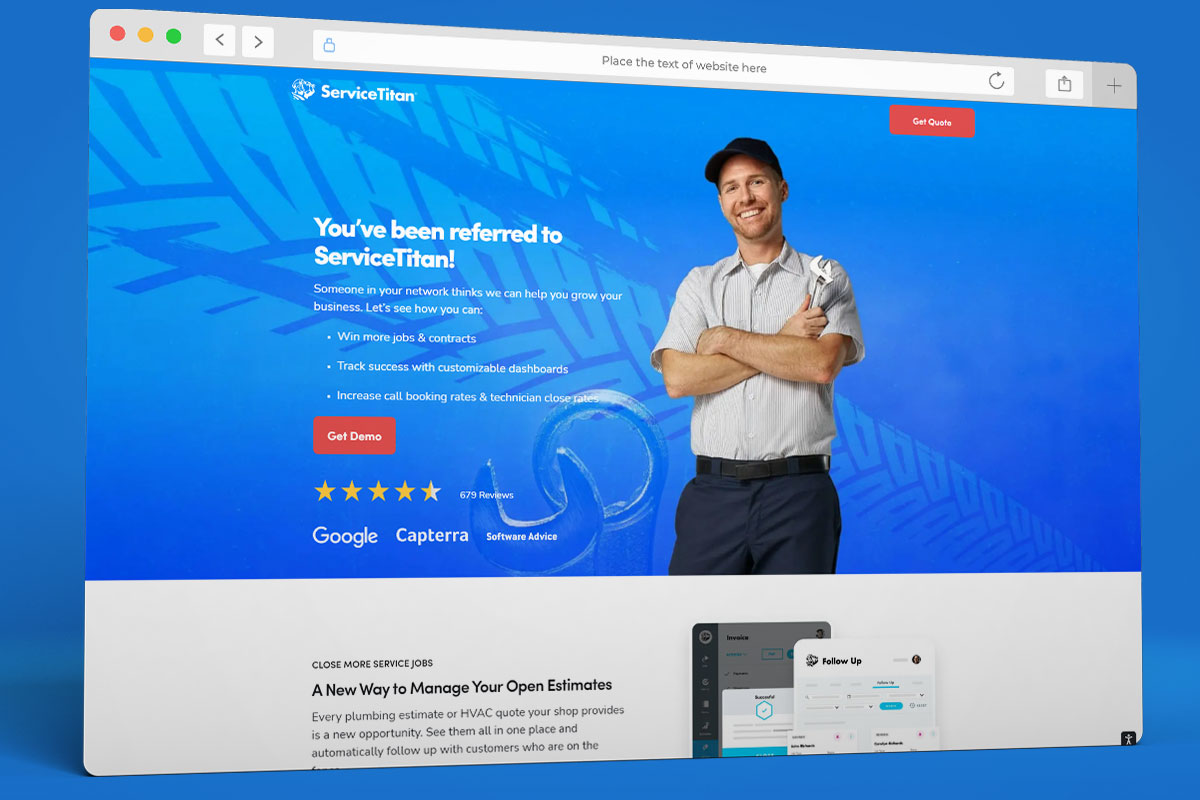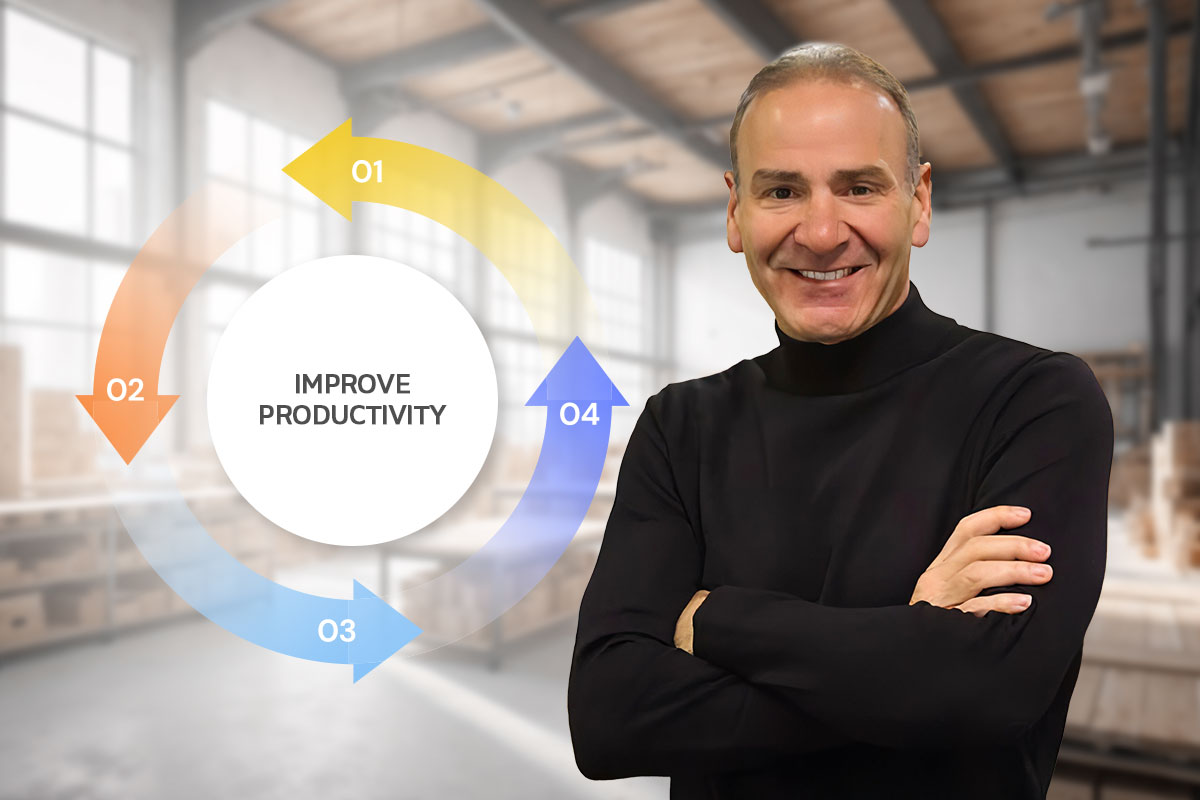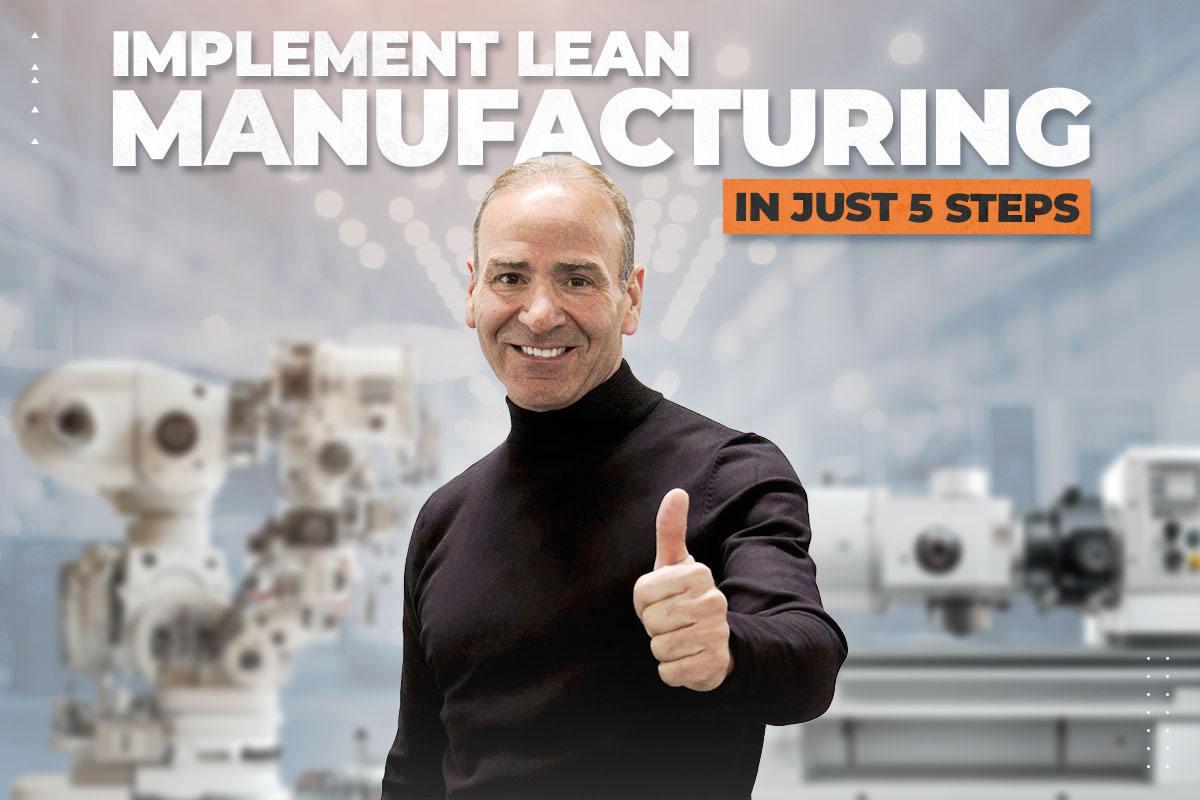Have you ever wondered how to make your product or service more efficient?
Paul Akers is obsessed with continuous improvement. He has a great time running FastCap and applying the principles of lean manufacturing. He took the time to sit down with us and explain how an idea to improve cabinets turned into a company that now earns over $36.5 million per year.
It’s a pretty awesome story! We’ll share his insights with you and expand upon what it means to be lean.
We’ll also discuss how to come up with your first idea and embrace the principles of lean management. Along the way, we’ll provide examples of how to eliminate waste in business.
I’ll also share some personal insights based on my Lean Six Sigma Green Belt certification. I’ll walk you through how service businesses can take the principles of lean manufacturing and convert them into actionable steps.
Keep reading or click on any of the links below to jump to the section that interests you:
Keep reading to improve your business practices.
What Is Lean Manufacturing?

Lean manufacturing focuses on two main principles:
- Eliminating waste (or muda in Japanese)
- Improving productivity
Lean principles have their roots in the Toyota production system dating back to 1930. Japan lacked the space and resources to build the massive factories you would find in other countries. This led to Toyota developing just-in-time manufacturing.
Paul Akers was familiar with the lean manufacturing process from seeing a friend’s cabinet shop where they didn’t make cabinets until they had an order. He didn’t really fully appreciate it until he had an experience where he couldn’t solve a problem at Fast Cap.
He was able to reduce a process from 45 minutes down to 5 minutes in about a week. That really improved the cycle time. After that, he jumped on a plane to Japan to learn what they were doing.
Lean Principles
There are two main principles of lean philosophy that every small business can benefit from: continuous improvement and waste reduction. These two ideas go hand in hand but serve different purposes as you create a lean strategy.
Continuous Improvement

Continuous improvement isn’t just about trying to save money. It’s a mindset. It’s always looking for ways to do things better.
When you reduce the amount of time you need to spend on essential tasks, you’ll be able to focus on things you want to do. Those extra tasks often create more value for your business.
Many business owners have improved their processes by automating routine tasks. In some cases, AI or other technologies can eliminate the need to hire someone else.
Waste Reduction
Lean thinking’s main goal is to reduce waste. There are seven or eight types of waste in a lean management system depending on your philosophy:
- Unnecessary transportation: Whenever you have to move something from one location to another, there is no value added to the customer. Taking the least amount of time and manufacturing at the lowest cost will always be the best option as long as you’re maintaining quality standards.
- Excess inventory: Ideally, you would hold the absolute minimum inventory because it saves on storage space, utilities, and money.
- Unnecessary movement: People and equipment should never move more than absolutely necessary to complete a task. Don’t create additional parts just to keep machines going and people working.
- Waiting: Idle equipment or people aren’t creating value. Provide your machines and teams to other companies when you have downtime.
- Over-production: Producing too much means you have to pay to store the excess.
- Over-processing: Unnecessary features or processing beyond what’s necessary both increase costs.
- Defects: Do the job right the first time. Every defect is a form of waste because it requires time and materials to fix.
- Wasted talent: Many companies fail to nurture employees to reach their full potential. Learn their goals and find mutually beneficial ways to develop your employees.
If you can’t already tell, most of these should save you money and hopefully increase your profit. Paul also thinks it’s important to emphasize secondary benefits:
Lean Case Study: Paul Akers
Paul Akers is a cabinet maker turned lean guru and serial product launcher. He got the idea for FastCap in 1997 when he was building some cabinets. He wanted a quick self-adhesive screw cover, and FastCap was born.
Since then, Paul has created and helped others launch 20 products per year. He told us that the best tool he found to eliminate waste is “3 S-ing.” It stands for sweep, sort, and standardize.
Check out our interview with Paul below to learn more about continuous improvement:
How to Implement a Lean Production System
To implement a lean production system in any business, you’ll want to:
- Define value.
- Identify the process steps.
- Build your system around the workflow.
- Establish a pull system.
- Continuously improve the system.
Step #1. Define Value

The first step to implementing lean thinking is to define value as it applies to your organization. That means you’ll want to consider what steps in the production process add value. There are three main groups to consider:
- Customers: This group consists of people and companies that buy your product or service.They care that your business is able to meet their needs, and they want to be kept up to date about relevant issues.
- Regulators: These external organizations require proof of compliance. Some industries have tight regulations, while others just have to pay sales tax.
- Stakeholders: Other stakeholders include executives and investors who want proof that an improvement adds financial value. They’ll want reports that show improved revenue and profit margins.
Each of these customers will define value differently. Take a moment to think about your business idea and what the most important aspects are for each of the three groups.
Step #2. Identify the Process Steps
In this step, you’ll want to look at what aspects provide value to the customer. The steps that do are part of the value stream, and the steps that don’t are waste. This will be different for each company depending on the products and services they offer.
Use value stream mapping to identify where your waste is. For service businesses, the steps that provide value to the customer are:
- Getting the information they need quickly
- Requesting an appointment or quote
- Letting the customer know when you are on the way
- Providing proof that the job was completed to their liking
- Offering easy ways to pay
In addition, management will want to know:
- The time and cost to complete each job
- Revenue earned from each job
- Progress against projections
- Customer satisfaction metrics
Based on this list, there are nine things that ultimately create value. Anything else is waste. Look for ways to make continuous improvement by reducing the time and energy needed to go through these processes.
Remember that you don’t need significant improvements. Saving a second or a minute on each task in the production process will create meaningful results over time.
Step #3. Build Your System Around the Workflow

Using the lean methodology to eliminate waste in your small business may mean you need to:
- Rearrange your processes.
- Invest in automation software.
- Train employees on new tasks.
- Purchase new equipment.
- Reposition your space for more efficient workflows.
The purpose of these changes is to create significant improvements in the long run. However, when you cut out steps that create waste, bottlenecks may form.
A bottleneck is a part of production that limits how much you can accomplish. For instance, when you first start a business, actual demand may be a bottleneck that needs to be dealt with by using new marketing strategies.
Once you increase the number of leads, then you may have a bottleneck form around providing quotes or adequate service. Quotes can be fixed with software like ServiceTitan, while service may require additional people or better dispatching.
Step #4. Establish a Pull System
Advancements like print on demand and dropshipping services have improved small businesses’ lean management capabilities, but many small businesses still operate with push systems.
A push system creates inventory based on a forecast and then sells it. It has higher upfront costs and ties up capital that could better be used to create value. Meanwhile, a pull system waits until actual demand (an order) occurs to produce the product or service.
This step in a lean management system will be heavily used by businesses that sell products. The main place you’ll see a pull system and push system for service businesses is in marketing.
- Push system: Search engine ads, social media ads, flyers, mailers
- Pull system: SEO, brand building, content creation
In his course about how to start a business, Brandon Vaughn explains that service businesses need both these methods:
Check out the UpFlip Academy to sign up for our courses on business growth, print on demand, and dropshipping.
Step #5. Continuously Improve the System

Lean manufacturing is more than just management jargon or a strategy to improve productivity. Lean operations are also known for their innovation.
You’ll never reach perfection, but it’s human nature to want to get better and better as time goes on. Think of it as an ongoing cycle. With continuous improvement, you’ll find new bottlenecks in your systems, which creates more opportunities to remove waste.
Increasing productivity is also one of the key tools you can use to keep inflation low. A lean management system will help you stay competitive and offer the best possible pricing.
Examples of Lean Management
Lean management and the Toyota production system have been used to improve performance in many different industries. Lean management has involved to include:
- Lean startups: This lean methodology focuses on creating a hypothesis, testing it, and creating a minimum viable product. From there, companies build out based on customer suggestions. Learn more about lean start-up methodologies.
- Lean manufacturing: This methodology is particularly beneficial for production and manufacturing companies. Paul uses lean manufacturing at FastCap.
- Lean software development: Software companies use lean and agile methodologies to help them release product updates quicker and more frequently.
- Lean Six Sigma: Many people think of lean as just running a business at the lowest cost, but Lean Six Sigma focuses on quality control as well. The program provides white belt, yellow belt, green belt, and black belt training and certifications.
- Value-based healthcare: This business model is focused on providing better patient care as measured by results instead of actions. It is not as commonly used as the fee-for-service method. It would drastically reduce payments for services like chemotherapy that don’t always cure the patient.
Paul uses making a cup of coffee as an example of how much waste there is in most processes:
Ideally, you’d want the cups, filters, and everything you need within arm’s reach. That way, you don’t have to move more than your arms to create a cup of coffee and serve it to a customer.
Useful Lean Tools
- Value stream mapping: Use this type of map to track the flow of materials and resources as you move through work processes. It will help you identify places to minimize waste.
- 5S: This stands for sort, straighten, sweep, standardize, and sustain. It’s a more detailed version of the 3S system that Paul talks about.
- Kanban: Kanban uses a board to represent the flow of work through each stage of the process.
- Standardized work: Standardizing work improves service quality and reduces defects.
- Bottleneck analysis: Use this tool to establish where there are delays in a process and eliminate the cause of the delay.
- Just in time: You want to produce an item exactly when you need it.
Paul gave two examples of how he uses a Kanban board to maintain a smooth flow in his lean manufacturing approach:
Want to learn more about other lean management methods? Check out these tools for optimizing resources, reducing costs, and improving productivity.
Lean Manufacturing Resources

To learn more about lean manufacturing and lean management, check out the Toyota Way 2020 update and Paul’s X account.
The Lean Six Sigma Institute also has a wealth of information about lean management. Their resources analyze various industries’ approaches to using lean manufacturing and Six Sigma.
Closing
We hope the advice from Paul Akins has helped you understand the concepts involved in lean manufacturing.
Whether your goal is improving your quality or refining your processes, lean management offers tools to help you succeed.
Sign up for our newsletter to get more great tips from business owners like Paul!





